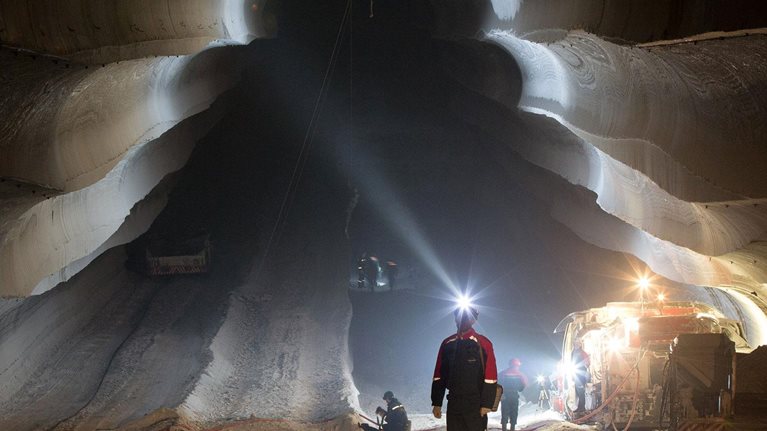The gold industry today finds itself at an inflection point between the recent era of cost-out initiatives and balance sheet deleveraging, and an increasing need to focus on growth and the replenishment of depleting gold reserves. However, after a period of impairments, write-downs, and value destruction following the M&A frenzy of the last gold price boom, shareholders in search of improved returns and greater management accountability are unlikely to support significant M&A programs which have been the traditional mainstay of production growth and gold reserve expansion for major gold companies. The future strategic options to drive growth will differ across industry players, but all will need to consider a mix of organic and inorganic approaches if they want to return to growth in an economic and sustainable way.
What goes up must come down
Since the turn of the century, the gold industry has experienced a rollercoaster ride, with prices rising from $255 an ounce in 2001 to highs of $1,906 a decade later, before falling to $1,056 by December 2015. This reversal of fortune led debt-heavy gold companies, which had engaged in aggressive M&A programs before the peak, to initiate dramatic cost-out programs, resulting in all-in sustaining costs (AISC) declining 20 percent to $879 an ounce between 2012 and 2017, and significant impairments totaling $129 billion since 2011 (Exhibit 1).

The impact of these initiatives, coupled with current higher gold prices, has restored the health of large gold companies, evidenced by stronger cash flows, leaner cost structures, and delevered balance sheets.
The replacement imperative
However, this recovery has come at a cost as gold reserves have declined by approximately 26 percent to 713 million ounces (Exhibit 2), due in part to a reduction of about 70 percent in exploration expenditure as companies sought to preserve cash. This raises the uncomfortable prospect of a looming reserve crisis.

During the last boom, gold companies sought to bolster reserves by launching acquisitions, with annual acquisitions peaking at $38 billion in 2011, while the average price paid per ounce reserve in this peak period was often more than 300 percent higher than deals executed a decade earlier. In recent years, shareholders and activist investors have become increasingly vocal about value destruction resulting from aggressive M&A strategies. This challenge is being exacerbated as greenfield exploration programs have failed to deliver but a handful of significant gold discoveries above 6 million ounces since 2006.
Implications for industry players
As a result, relying on traditional greenfield strategies alone will likely be insufficient for many companies with aspirations to capture growth in this new era. In the face of recent write-downs and impairments, strategies that relied primarily on acquisitions will likely be out of favor, and gold companies will need to improve traditional inorganic approaches as well as leverage new methods and technologies offered by digital and advanced analytics.
Would you like to learn more about our Metals & Mining Practice?
Innovations in organic exploration will provide an opportunity for companies not only to expand their reserve bases but also to build a unique source of competitive advantage relative to their peers. With lead times from discovery to first production averaging 20 years and exploration costs at historic highs, the mining industry is searching for technologies that will disrupt its current exploration business model and aid new discoveries. Advanced analytics, when applied to exploration, means that companies will be able to assess a wide range of data sources including drill logs, geological models, and unstructured map analysis simultaneously to identify new correlations and ultimately to better identify mineralized zones.
Inorganic acquisition strategies will still have a role to play—as has been witnessed by the recent zero premium merger of Barrick and RandGold, or the Newmont and Goldcorp merger—although the focus will need to be on rigorous, disciplined execution as management teams rebuild trust with shareholders and investors. The inorganic strategies deployed by large mining companies will need to reflect a portfolio approach that balances the near-term certainty of production growth and cash flows with longer-term growth options. In addition, mining-company strategy teams will need to look harder for sources of synergies between transactions, either through focusing on specific geographies, types of mineralization and ore bodies, or processing techniques. Within this realm, it should be noted that divestitures will be as important as acquisitions in shaping corporate portfolios.

Behind the mining productivity upswing: Technology-enabled transformation
Technology-enabled transformations will also need to remain a priority on the agenda of management teams as the next wave of productivity is driven across the business. To take advantage of future cost and productivity opportunities, gold companies will need to embrace innovation in automation machine learning, mobile digital, the Industrial Internet of Things (IIoT), and blockchain. The impact will likely be seen across the value chain through, but not limited to, stochastic geological modeling, autonomous trucks and drillers, optimized mine logistics and scheduling, predictive-maintenance strategies, and yield optimization at processing plants.
The strategic response required will differ by company, depending on factors including the strength of gold reserves and project pipeline, internal exploration and project-development capabilities, financial balance sheet strength, and M&A-execution track record. Whatever approach is adopted, management teams will need to focus as much on organic exploration leveraging new technologies as inorganic strategies carefully evaluated and seamlessly executed. For CEOs and management teams ready to take the challenge, this new era could truly be a golden age.
Download Can the gold industry return to the golden age?, the full report on which this article is based (PDF–563KB).


